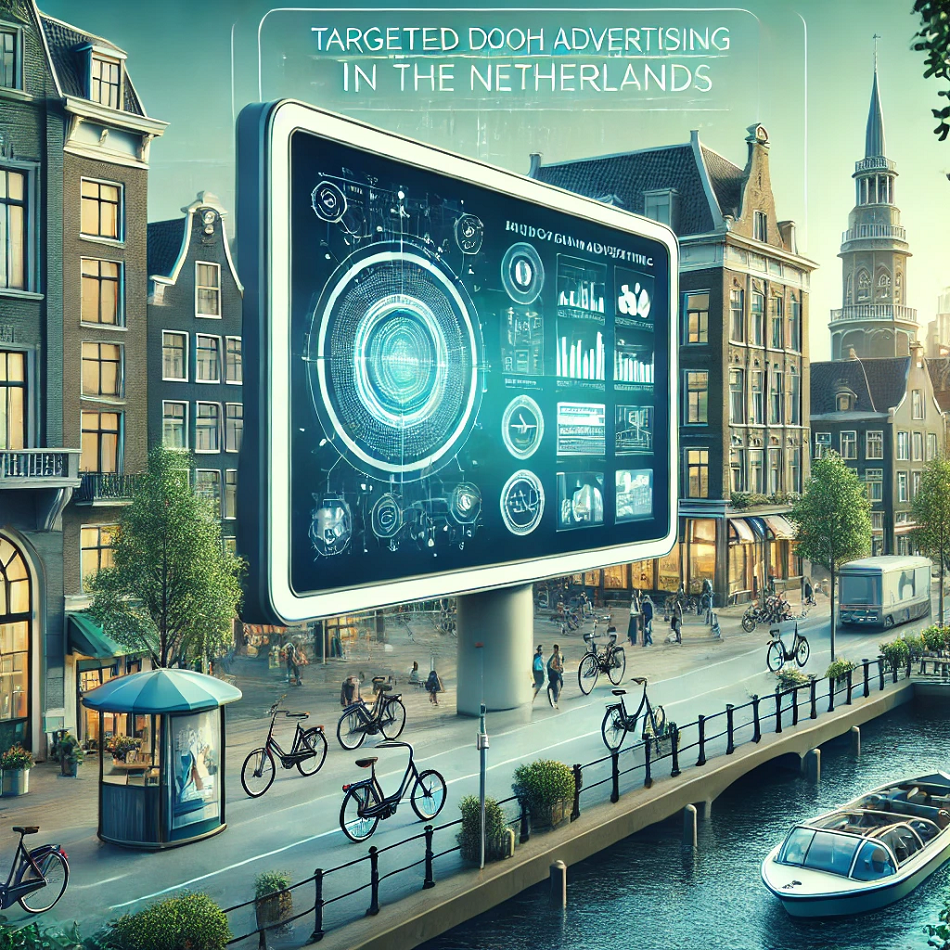As digital out-of-home (DOOH) advertising continues to grow, brands in the Netherlands are leveraging targeted DOOH strategies to reach audiences in highly effective ways. The ability to deliver tailored messages to specific demographics and locations has made targeted DOOH advertising a powerful tool for brands looking to connect with their audience in real-time and with precise relevance. But what exactly is targeted DOOH advertising, and how can it benefit brands operating in the Netherlands?
What is Targeted DOOH Advertising?
Targeted DOOH advertising involves delivering specific messages to selected audiences based on various criteria, such as location, demographics, time, and even weather conditions. This approach allows brands to reach the right people at the right place and time, optimizing the impact of each campaign. For example, an outdoor digital ad can be customized to target commuters during rush hours, promoting a coffee brand in the morning and a dinner spot in the evening.
For companies like Confirm, which specialize in comprehensive DOOH reporting and proof of play, targeted advertising represents a major advantage. Confirm provides advertisers and agencies with a dashboard that offers full insight into ad delivery, audience reach, and campaign performance, making it easier to implement and monitor targeted campaigns.
Benefits of Targeted DOOH Advertising in the Netherlands
The Netherlands is an ideal market for targeted DOOH advertising due to its urban density, extensive transit networks, and tech-savvy population. Here are some key benefits of using targeted DOOH in the Dutch market:
1. Enhancing Relevance and Engagement
Targeted DOOH campaigns allow brands to deliver messages that are relevant to specific locations and audiences, which increases engagement and strengthens brand recall. By tailoring ads based on context, brands can connect with their audience more effectively.
Example: Albert Heijn, one of the largest supermarket chains in the Netherlands, used targeted DOOH advertising to promote seasonal products. By displaying different ads in urban and suburban locations, Albert Heijn increased engagement by aligning product offerings with local preferences, reinforcing its connection with the community.
2. Reaching Audiences in High-Traffic Areas
With targeted DOOH, brands can strategically place their ads in high-traffic areas like train stations, airports, and shopping centers, where exposure to diverse audiences is high. This type of advertising is particularly valuable in cities like Amsterdam, Rotterdam, and Utrecht, where foot traffic is dense and consistent.
Example: KLM Royal Dutch Airlines used targeted DOOH advertising in major transit hubs, like Schiphol Airport and Amsterdam Central Station, to promote its new flight routes. By reaching travelers at key points of their journey, KLM successfully increased awareness and bookings for its flights.
3. Utilizing Real-Time Data for Dynamic Campaigns
One of the most compelling aspects of targeted DOOH advertising is the ability to use real-time data to adjust ads based on current conditions. Whether it’s the time of day, weather, or social events, brands can create dynamic campaigns that respond to changing conditions.
Example: Heineken employed targeted DOOH advertising to promote its beer products during sunny days. Using weather-triggered ads, Heineken displayed ads when the temperature rose above a certain threshold, encouraging consumers to enjoy a cold drink on warm days, which helped drive sales during peak weather conditions.
4. Increasing ROI with Precision Marketing
By focusing on specific locations and audiences, targeted DOOH advertising helps brands maximize their return on investment. Instead of casting a wide net, brands can concentrate their advertising spend on areas and times with the highest potential for engagement, making each ad more cost-effective.
Example: Vodafone Netherlands utilized targeted DOOH to promote a new mobile plan by focusing on high-density urban areas frequented by young professionals. By narrowing their target to this specific audience, Vodafone achieved a higher ROI, as the campaign reached individuals most likely to be interested in the offer.
How to Implement Effective Targeted DOOH Campaigns in the Netherlands
Implementing a successful targeted DOOH campaign in the Netherlands requires careful planning, audience analysis, and continuous monitoring. Here are a few steps to ensure success:
- Define Clear Audience Segments: Start by identifying the demographics, behaviors, and preferences of your target audience. Tailor your message to fit their needs and interests.
- Choose Strategic Locations: Select high-traffic areas that align with your audience’s routines, such as transit hubs, shopping districts, or business centers. This will help ensure maximum exposure to your ideal audience.
- Use Real-Time Data for Dynamic Adjustments: Take advantage of real-time data to adjust your ads based on factors like weather, time of day, and local events. This will make your ads more relevant and timely.
- Monitor and Optimize with Proof of Play Data: Utilizing proof of play data, like the services provided by Confirm, allows brands to track ad delivery, assess engagement, and make adjustments as needed. Confirm’s dashboard offers a clear, comprehensive view of all campaign aspects, helping brands maximize impact and ROI.
Conclusion
In a country as interconnected and urbanized as the Netherlands, targeted DOOH advertising offers brands an efficient way to reach specific audiences with tailored messages. From enhancing engagement to boosting ROI, this advertising approach has proven to be a valuable asset for brands across various industries.
Confirm is at the forefront of providing targeted DOOH solutions, offering advertisers and agencies the tools they need to monitor and optimize campaigns with precision. With Confirm’s holistic dashboard and proof of play reporting, brands can have full control over their DOOH strategies and confidently reach their intended audience.
Embracing targeted DOOH advertising isn’t just a strategy—it’s a necessity for brands that want to stay competitive in the digital age. With the Netherlands’ vibrant cities and tech-driven population, the potential for impactful, targeted campaigns has never been greater.
